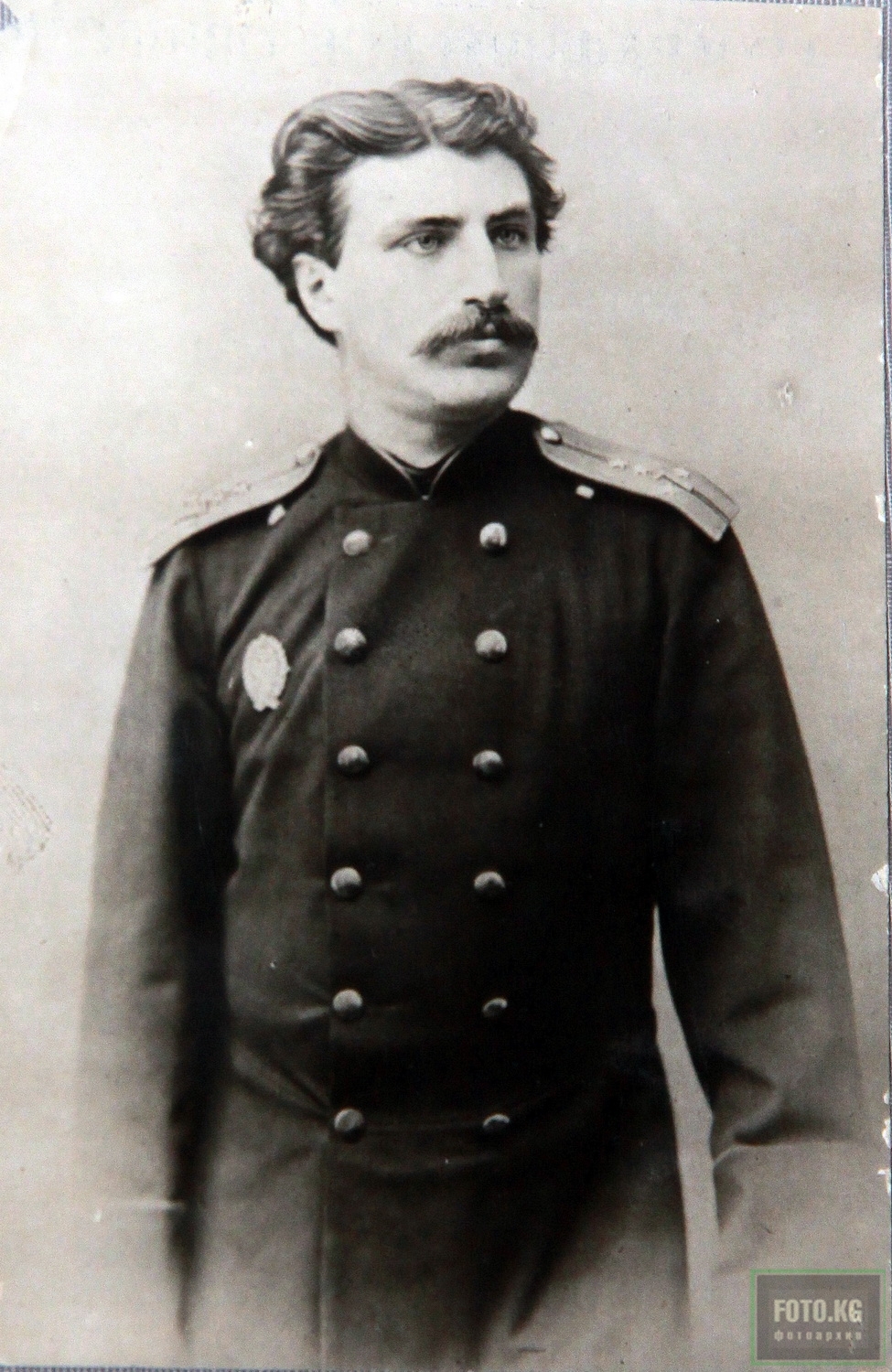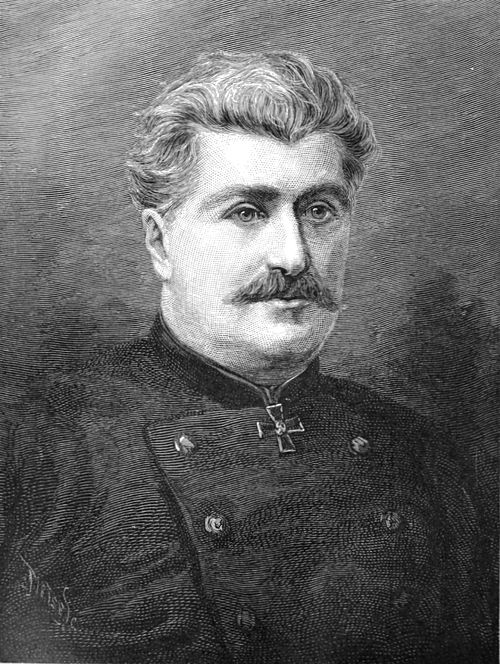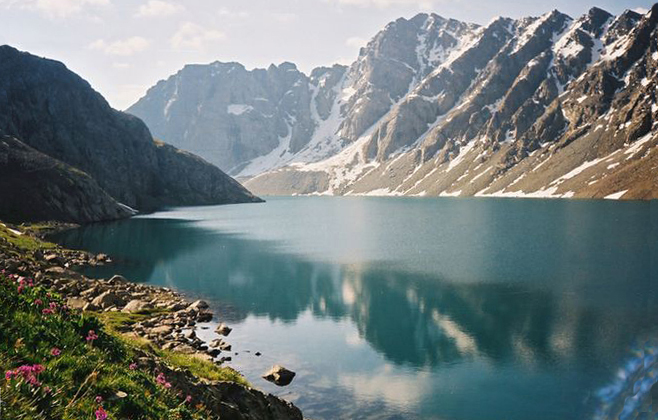|
Przewalski
Nikolay Mikhaylovich Przhevalsky (or Prjevalsky;; pl, Nikołaj Przewalski, . – ) was a Russian geographer of Polish descent (he was born in a Polish noble family), and a renowned explorer of Central and East Asia. Although he never reached his ultimate goal, the holy city of Lhasa in Tibet, he traveled through regions then unknown to the West, such as northern Tibet (modern Tibet Autonomous Region), Amdo (now Qinghai) and Dzungaria (now northern Xinjiang). He contributed substantially to European knowledge of Central Asian geography. He also described several species previously unknown to European science: Przewalski's horse, Przewalski's gazelle, and the wild Bactrian camel, all of which are now endangered. He was a mentor of his follower Pyotr Kozlov. Biography Przhevalsky was born in Kimborovo, in the Smolensky Uyezd of the Smolensk Governorate of the Russian Empire in the Polish noble family. He studied there and at the military academy in St. Petersburg. In ... [...More Info...] [...Related Items...] OR: [Wikipedia] [Google] [Baidu] |
Przewalski's Horse
Przewalski's horse (, , (Пржевальский ), ) (''Equus ferus przewalskii'' or ''Equus przewalskii''), also called the takhi, Mongolian wild horse or Dzungarian horse, is a rare and endangered horse originally native to the steppes of Central Asia. It is named after the Russian geographer and explorer Nikolay Przhevalsky. Once extinct in the wild, it has been reintroduced to its native habitat since the 1990s in Mongolia at the Khustain Nuruu National Park, Takhin Tal Nature Reserve, and Khomiin Tal, as well as several other locales in Central Asia and Eastern Europe. Several genetic characteristics of Przewalski's horse differ from what is seen in modern domestic horses, indicating neither is an ancestor of the other. For example, the Przewalski has 33 chromosome pairs, compared to 32 for the domestic horse. Their ancestral lineages split from a common ancestor between 38,000 and 160,000 years ago, long before the domestication of the horse. Przewalski's horse was long ... [...More Info...] [...Related Items...] OR: [Wikipedia] [Google] [Baidu] |
Przewalski's Gazelle
Przewalski's gazelle (''Procapra przewalskii'') is a member of the family Bovidae, and in the wild, is found only in China. Once widespread, its range has declined to six populations near Qinghai Lake. The gazelle was named after Nikolai Przhevalsky, a Russian explorer who collected a specimen and brought it back to St. Petersburg in 1875. Description Przewalski's gazelles are relatively small, slender antelopes with large eyes and short, pointed ears. The nasal bones are relatively large, suggesting an adaptation to the thin air of the Tibetan plateau. They have a head and body length of , a shoulder height of , and weigh between . Males are generally larger and heavier than the females. The tail is short, measuring only , and is often entirely hidden by fur. The animal is yellowish brown with a white underside and a white heart-shaped patch on its rump, partially bisected by a light brown vertical line. Males are darker in colour than females, and the coat of both sexes is more ... [...More Info...] [...Related Items...] OR: [Wikipedia] [Google] [Baidu] |
Nikolay Przhevalsky
Nikolay Mikhaylovich Przhevalsky (or Prjevalsky;; pl, Nikołaj Przewalski, . – ) was a Russian geographer of Polish descent (he was born in a Polish noble family), and a renowned explorer of Central and East Asia. Although he never reached his ultimate goal, the holy city of Lhasa in Tibet, he traveled through regions then unknown to the West, such as northern Tibet (modern Tibet Autonomous Region), Amdo (now Qinghai) and Dzungaria (now northern Xinjiang). He contributed substantially to European knowledge of Central Asian geography. He also described several species previously unknown to European science: Przewalski's horse, Przewalski's gazelle, and the wild Bactrian camel, all of which are now endangered. He was a mentor of his follower Pyotr Kozlov. Biography Przhevalsky was born in Kimborovo, in the Smolensky Uyezd of the Smolensk Governorate of the Russian Empire in the Polish noble family. He studied there and at the military academy in St. Petersburg. In ... [...More Info...] [...Related Items...] OR: [Wikipedia] [Google] [Baidu] |
Karakol
Karakol ( ky, Каракол, Karakol, قاراقول, ; zh, 卡拉科尔), formerly Przhevalsk (russian: Пржевальск), is the fourth-largest city in Kyrgyzstan, near the eastern tip of Lake Issyk-Kul, about from the Kyrgyzstan–China border and from the capital Bishkek. It is the administrative capital of Issyk-Kul Region. Its area is , and its resident population was 84,351 in 2021 (both including Pristan'-Przheval'sk). To the north, on highway A363, is Tüp, and to the southwest Jeti-Ögüz resort. History A Russian military outpost founded on 1 July 1869, Karakol grew in the 19th century after explorers came to map the peaks and valleys separating Kyrgyzstan from China. In the 1880s Karakol's population surged with an influx of Dungans, Chinese Muslims fleeing warfare in China. In 1888, the Russian explorer Nicholay Przhevalsky died in Karakol of typhoid, while preparing for an expedition to Tibet; the city was renamed Przhevalsk in his honor. After local ... [...More Info...] [...Related Items...] OR: [Wikipedia] [Google] [Baidu] |
Wild Bactrian Camel
The wild Bactrian camel (''Camelus ferus'') is a critically endangered species of camel living in parts of northwestern China and southwestern Mongolia. It is closely related to the Bactrian camel (''Camelus bactrianus''). Both are large, double-humped even-toed ungulates native to the steppes of central Asia. Until recently, wild Bactrian camels were thought to have descended from domesticated Bactrian camels that became feral after being released into the wild. However, genetic studies have established it as a separate species which diverged from the Bactrian camel about 1.1 million years ago.See, for example: Hare (2008) and Potts (2004) Currently, only about 1,000 wild Bactrian camels are living in the wild. reported 1,400 in 2012, now says 1,000 Most live on the Lop Nur Wild Camel National Nature Reserve in China, and a smaller population lives in the Great Gobi A Strictly Protected Area in Mongolia. There are also populations in the Altun Shan National Nature Reserve#19 ... [...More Info...] [...Related Items...] OR: [Wikipedia] [Google] [Baidu] |
Dzungaria
Dzungaria (; from the Mongolian language, Mongolian words , meaning 'left hand') is a geographical subregion in Northwest China that corresponds to the northern half of Xinjiang. It is thus also known as Beijiang, which means "Northern Xinjiang". Bounded by the Altai Mountains to the north and the Tian Shan mountain range to the south, Dzungaria covers approximately , and borders Kazakhstan to the west and Mongolia to the east. In contexts prior to the mid-18th century Dzungar genocide, the term "Dzungaria" could cover a wider area, conterminous with the Oirats, Oirat-led Dzungar Khanate. Although Dzungaria is geographically, historically, and ethnically distinct from the Tarim Basin (or Nanjiang, ), the Manchu people, Manchu-led Qing dynasty integrated both areas into one province, Xinjiang. Dzungaria is Xinjiang's center of heavy industry, generates most of the region's GDP, and houses its political capital Ürümqi (Oirat language, Oirat for 'beautiful pasture'). As such, Dzun ... [...More Info...] [...Related Items...] OR: [Wikipedia] [Google] [Baidu] |
Pochinkovsky District, Smolensk Oblast
Pochinkovsky District (russian: Починковский райо́н) is an administrativeResolution #261 and municipalLaw #132-z district (raion), one of the twenty-five in Smolensk Oblast, Russia. It is located in the southern central part of the oblast and borders with Kardymovsky District in the north, Glinkovsky District in the northeast, Yelninsky District in the east, Roslavlsky District in the southeast, Shumyachsky District in the south, Khislavichsky District in the southwest, Monastyrshchinsky District in the west, and with Smolensky District in the northwest. The area of the district is . Its administrative center is the town of Pochinok. Population: 30,959 ( 2010 Census); The population of Pochinok accounts for 28.3% of the district's total population. Geography The whole area of the district belongs to the drainage basin of the Dnieper. Most of the area belongs to the drainage basin of the Sozh, a left tributary of the Dnieper. The Sozh crosses the area of the di ... [...More Info...] [...Related Items...] OR: [Wikipedia] [Google] [Baidu] |
Amdo
Amdo ( �am˥˥.to˥˥ ) is one of the three traditional Tibetan regions, the others being U-Tsang in the west and Kham in the east. Ngari (including former Guge kingdom) in the north-west was incorporated into Ü-Tsang. Amdo is also the birthplace of the 14th Dalai Lama. Amdo encompasses a large area from the Machu (Yellow River) to the Drichu (Yangtze). Amdo is mostly coterminous with China's present-day Qinghai province, but also includes small portions of Sichuan and Gansu provinces. Historically, culturally, and ethnically a part of Tibet, Amdo was from the mid-18th century and after administered by a series of local Tibetan rulers. The Dalai Lamas have not directly governed the area since that time. From 1917 to 1928, much of Amdo was occupied intermittently by the Hui Muslim warlords of the Ma clique. In 1928, the Ma Clique joined the Kuomintang (Chinese Nationalist Party), and during the period from 1928 to 1949, much of Amdo was gradually assimilated into the Qingh ... [...More Info...] [...Related Items...] OR: [Wikipedia] [Google] [Baidu] |
Irkutsk
Irkutsk ( ; rus, Иркутск, p=ɪrˈkutsk; Buryat language, Buryat and mn, Эрхүү, ''Erhüü'', ) is the largest city and administrative center of Irkutsk Oblast, Russia. With a population of 617,473 as of the 2010 Census, Irkutsk is the List of cities and towns in Russia by population, 25th-largest city in Russia by population, the fifth-largest in the Siberian Federal District, and one of the largest types of inhabited localities in Russia, cities in Siberia. Located in the south of the eponymous oblast, the city proper lies on the Angara River, a tributary of the Yenisei River, Yenisei, about 850 kilometres (530 mi) to the south-east of Krasnoyarsk and about 520 kilometres (320 mi) north of Ulaanbaatar. The Trans-Siberian Highway (Federal M53 and M55 Highways) and Trans-Siberian Railway connect Irkutsk to other regions in Russia and Mongolia. Many distinguished Russians were sent into exile in Irkutsk for their part in the Decembrist revolt of 1825, and t ... [...More Info...] [...Related Items...] OR: [Wikipedia] [Google] [Baidu] |
Russian Geographical Society
The Russian Geographical Society (russian: Ру́сское географи́ческое о́бщество «РГО»), or RGO, is a learned society based in Saint Petersburg, Russia. It promotes geography, exploration and nature protection with research programs in fields including oceanography, ethnography, ecology and statistics. History Imperial Geographical Society The society was founded in Saint Petersburg, Russia on 6 (18) August 1845. Prior to the Russian Revolution of 1917, it was known as the Imperial Russian Geographical Society. The order to establish the society came directly from Emperor Nicholas I. The motive for the establishment was to encourage geographical research on domestic topics, which has later been described as a Russian nationalist political goal. The filial societies were established at the Caucasus (1850), Irkutsk (1851), Vilnius (1867), Orenburg (1868), Kiev (1873), Omsk (1877), and other cities. The Society organized and funded the expediti ... [...More Info...] [...Related Items...] OR: [Wikipedia] [Google] [Baidu] |
Warsaw
Warsaw ( pl, Warszawa, ), officially the Capital City of Warsaw,, abbreviation: ''m.st. Warszawa'' is the capital and largest city of Poland. The metropolis stands on the River Vistula in east-central Poland, and its population is officially estimated at 1.86 million residents within a greater metropolitan area of 3.1 million residents, which makes Warsaw the 7th most-populous city in the European Union. The city area measures and comprises 18 districts, while the metropolitan area covers . Warsaw is an Alpha global city, a major cultural, political and economic hub, and the country's seat of government. Warsaw traces its origins to a small fishing town in Masovia. The city rose to prominence in the late 16th century, when Sigismund III decided to move the Polish capital and his royal court from Kraków. Warsaw served as the de facto capital of the Polish–Lithuanian Commonwealth until 1795, and subsequently as the seat of Napoleon's Duchy of Warsaw. Th ... [...More Info...] [...Related Items...] OR: [Wikipedia] [Google] [Baidu] |
Saint Petersburg
Saint Petersburg ( rus, links=no, Санкт-Петербург, a=Ru-Sankt Peterburg Leningrad Petrograd Piter.ogg, r=Sankt-Peterburg, p=ˈsankt pʲɪtʲɪrˈburk), formerly known as Petrograd (1914–1924) and later Leningrad (1924–1991), is the second-largest city in Russia. It is situated on the Neva River, at the head of the Gulf of Finland on the Baltic Sea, with a population of roughly 5.4 million residents. Saint Petersburg is the fourth-most populous city in Europe after Istanbul, Moscow and London, the most populous city on the Baltic Sea, and the world's northernmost city of more than 1 million residents. As Russia's Imperial capital, and a historically strategic port, it is governed as a federal city. The city was founded by Tsar Peter the Great on 27 May 1703 on the site of a captured Swedish fortress, and was named after apostle Saint Peter. In Russia, Saint Petersburg is historically and culturally associated with t ... [...More Info...] [...Related Items...] OR: [Wikipedia] [Google] [Baidu] |








